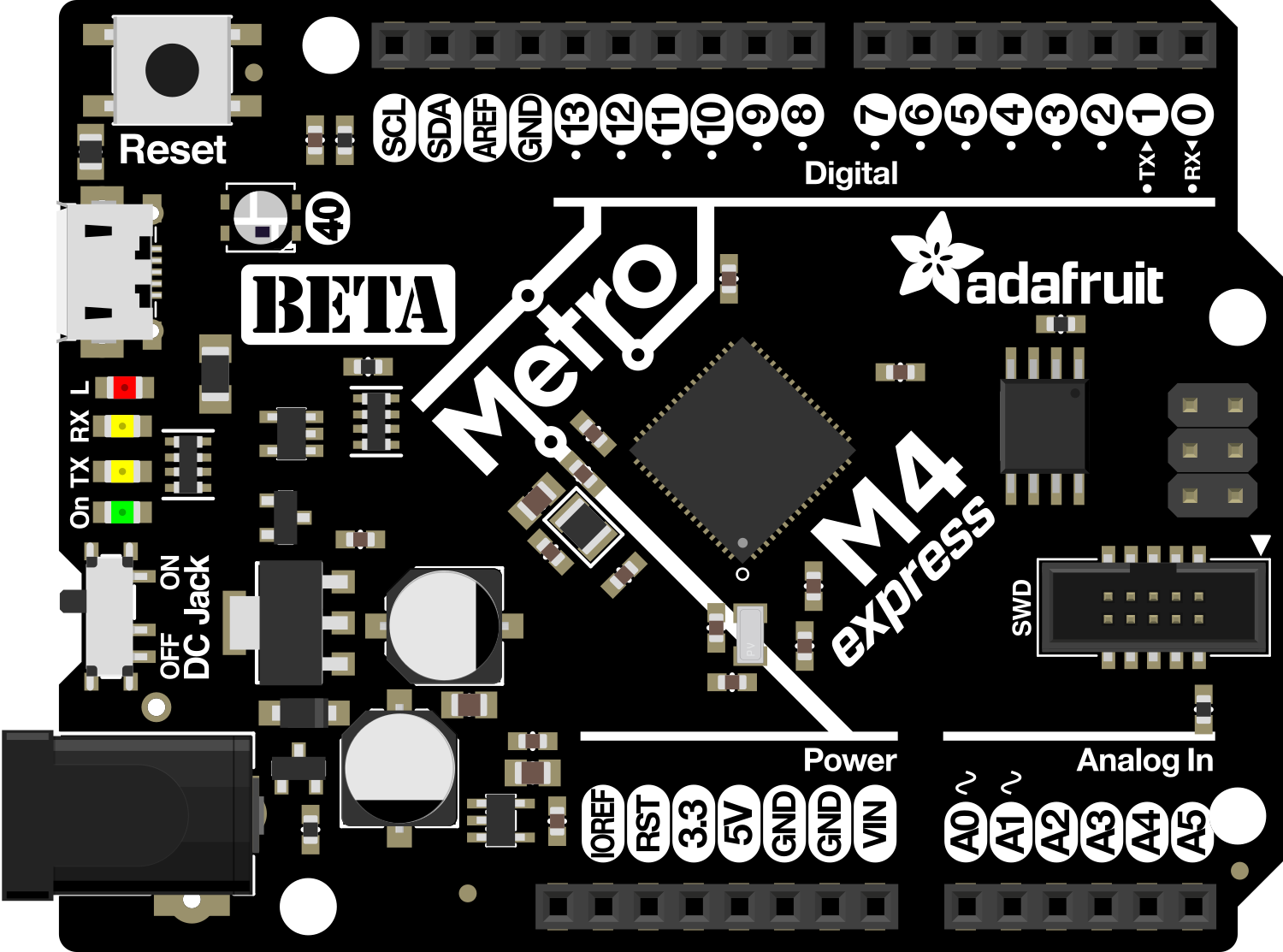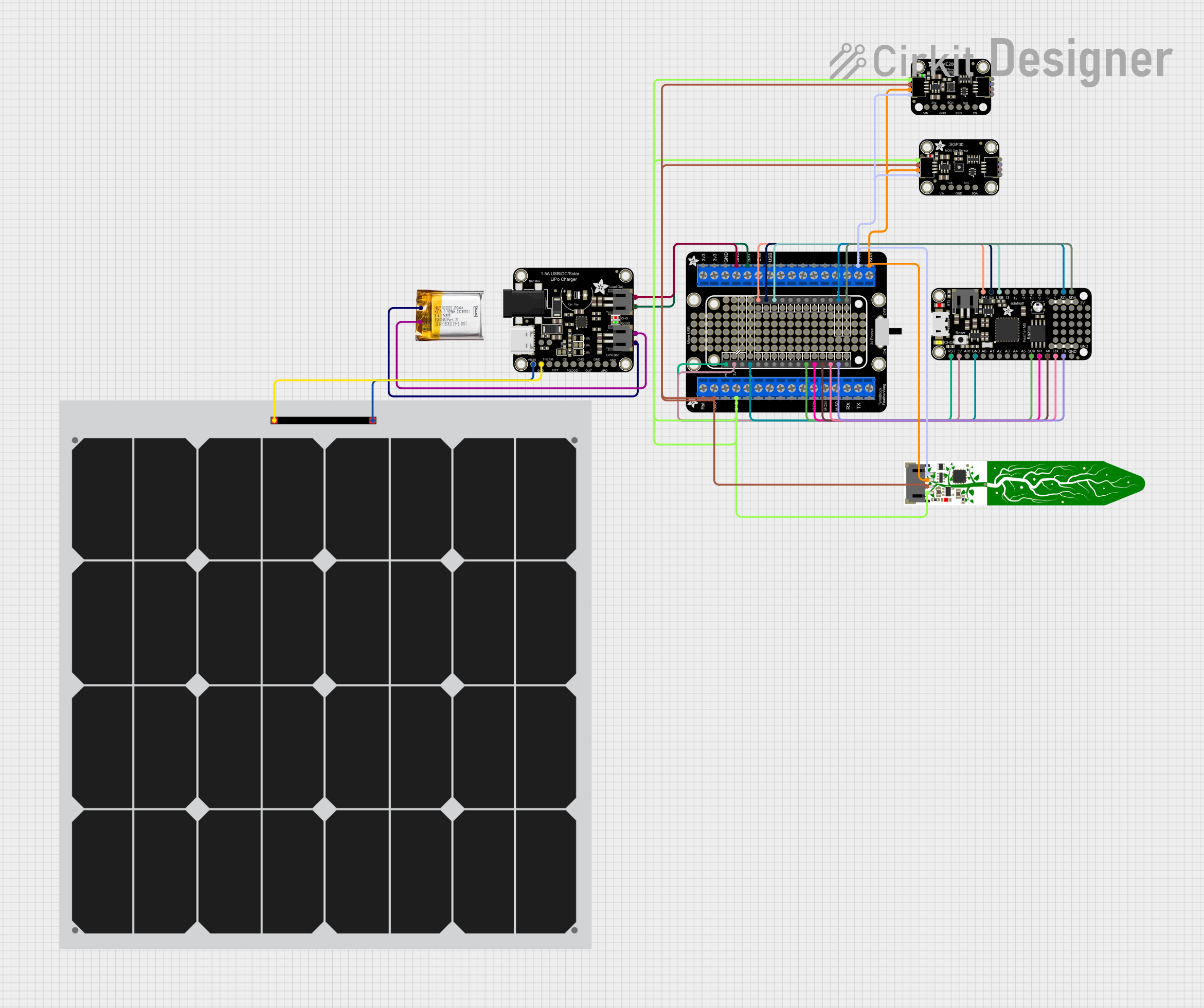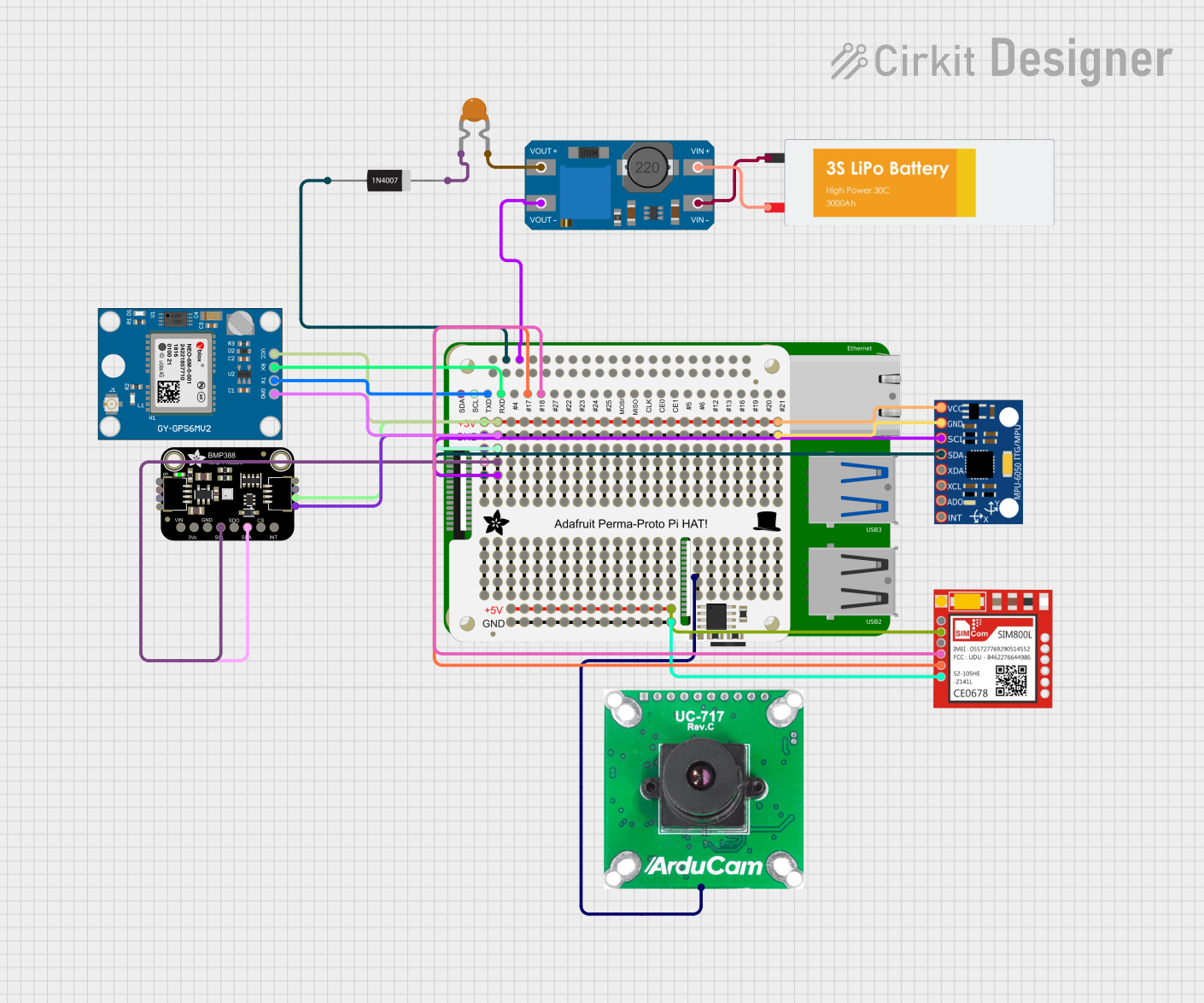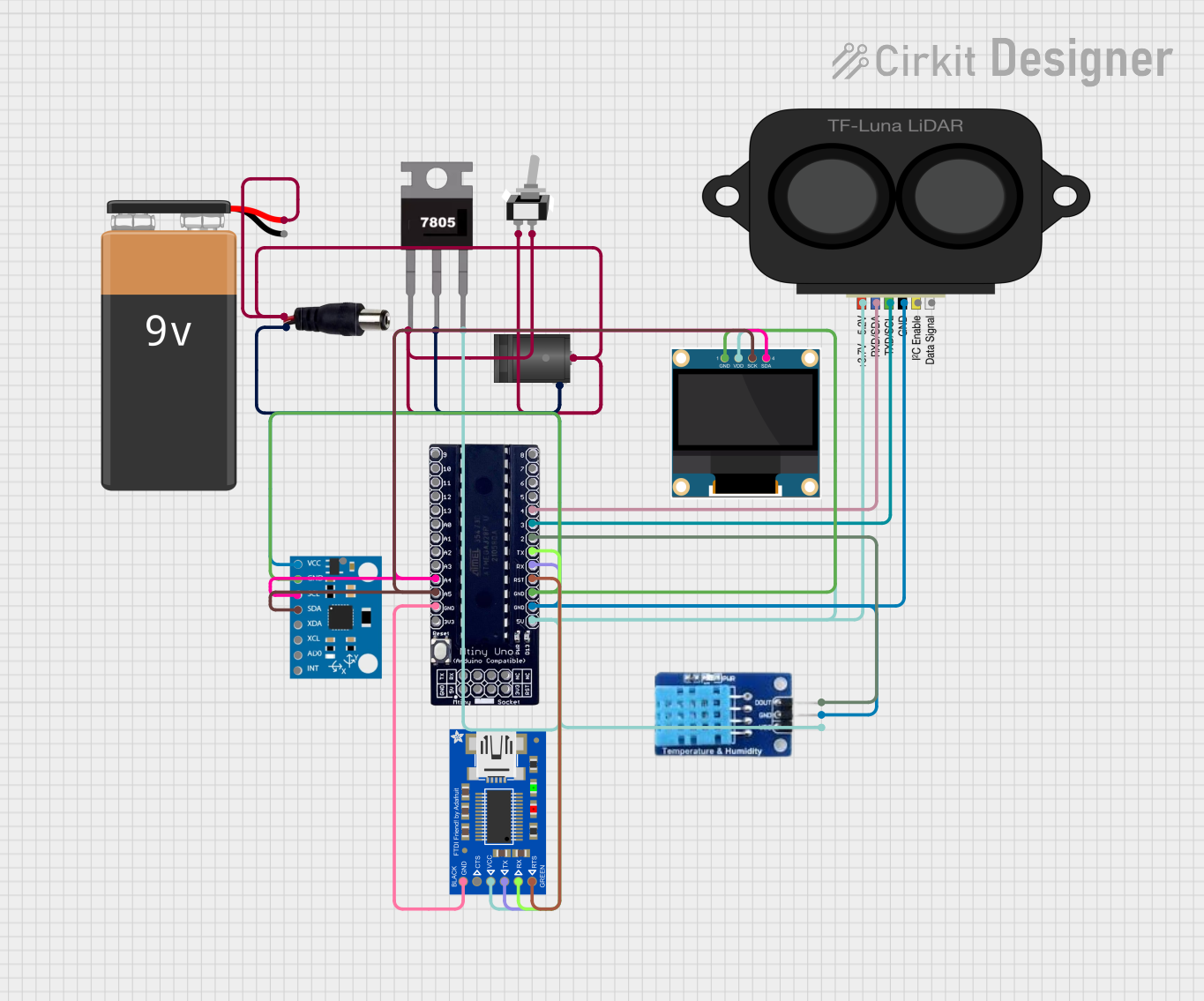
How to Use Adafruit Metro M4 Express: Examples, Pinouts, and Specs

 Design with Adafruit Metro M4 Express in Cirkit Designer
Design with Adafruit Metro M4 Express in Cirkit DesignerIntroduction
The Adafruit Metro M4 Express is a feature-rich development board designed for makers and hobbyists who require a robust platform for building electronic projects. Based on the Microchip ATSAMD51 microcontroller, this board is compatible with a vast array of sensors and actuators, making it ideal for applications ranging from simple LED blinkers to complex robotics.
Explore Projects Built with Adafruit Metro M4 Express

 Open Project in Cirkit Designer
Open Project in Cirkit Designer
 Open Project in Cirkit Designer
Open Project in Cirkit Designer
 Open Project in Cirkit Designer
Open Project in Cirkit Designer
 Open Project in Cirkit Designer
Open Project in Cirkit DesignerExplore Projects Built with Adafruit Metro M4 Express

 Open Project in Cirkit Designer
Open Project in Cirkit Designer
 Open Project in Cirkit Designer
Open Project in Cirkit Designer
 Open Project in Cirkit Designer
Open Project in Cirkit Designer
 Open Project in Cirkit Designer
Open Project in Cirkit DesignerCommon Applications and Use Cases
- Prototyping IoT devices
- Educational purposes for learning electronics and programming
- DIY home automation systems
- Wearable electronics
- Custom controllers for robotics
- Data logging and sensor monitoring
Technical Specifications
The Adafruit Metro M4 Express is equipped with a multitude of technical features that provide flexibility and power for various projects.
Key Technical Details
- Microcontroller: ATSAMD51J19
- Clock Speed: 120 MHz
- Flash Memory: 512 KB
- RAM: 192 KB
- Digital I/O Pins: 25
- PWM Channels: 12
- Analog Input Pins: 6 (12-bit ADC)
- Analog Output Pins: 1 (10-bit DAC)
- Operating Voltage: 3.3V
- Input Voltage (recommended): 7-9V
- Input Voltage (limits): 6-12V
- Interfaces: I2C, SPI, UART
- USB Connectivity: Native USB support
Pin Configuration and Descriptions
| Pin Number | Function | Description |
|---|---|---|
| 1 | GND | Ground |
| 2 | VIN | Input voltage to the board |
| 3-5 | Analog In | Analog input pins |
| 6-17 | Digital I/O | Digital input/output pins |
| 18-19 | I2C (SDA, SCL) | I2C data & clock lines |
| 20-21 | SPI (MISO, MOSI, SCK) | SPI communication lines |
| 22-23 | UART (RX, TX) | UART communication lines |
| 24 | 5V | Regulated 5V output |
| 25 | 3V3 | Regulated 3.3V output |
Usage Instructions
How to Use the Component in a Circuit
- Powering the Board: Connect a 7-9V power supply to the VIN and GND pins, or power the board via the USB connection.
- Connecting I/O Devices: Attach sensors, actuators, or other peripherals to the digital and analog pins as required by your project.
- Programming the Board: Use the Arduino IDE or other compatible software to write and upload code to the Metro M4 Express.
Important Considerations and Best Practices
- Always ensure that the power supply voltage is within the specified limits to prevent damage.
- When connecting external components, make sure they are compatible with the board's operating voltage (3.3V logic level).
- Avoid drawing more than 20 mA from any I/O pin.
- Use external power sources when driving high-current devices like motors or high-power LEDs.
Example Code for Arduino UNO
// Blink an LED connected to pin 13
void setup() {
pinMode(13, OUTPUT); // Set pin 13 as an output
}
void loop() {
digitalWrite(13, HIGH); // Turn the LED on
delay(1000); // Wait for a second
digitalWrite(13, LOW); // Turn the LED off
delay(1000); // Wait for a second
}
Troubleshooting and FAQs
Common Issues
- Board not recognized by computer: Ensure the USB cable is properly connected and the board is powered on. Try a different USB port or cable if necessary.
- Sketch not uploading: Check for correct board and port selection in the Arduino IDE. Ensure the bootloader is not corrupted.
- I/O pin not functioning: Verify that the pin is not being used by another peripheral and is configured correctly in your code.
Solutions and Tips for Troubleshooting
- If the board is not recognized, press the reset button twice quickly to enter bootloader mode.
- For I/O issues, use a multimeter to check for continuity and correct voltage levels.
- Consult the Adafruit forums and online resources for community support and additional troubleshooting advice.
FAQs
Q: Can I power the Metro M4 Express with a battery? A: Yes, you can use a battery within the input voltage limits (6-12V).
Q: Is the Metro M4 Express compatible with all Arduino shields? A: While many shields will work, some may not be compatible due to differences in voltage levels or pin assignments. Always check shield specifications.
Q: How do I use the onboard DAC?
A: The DAC can be used to output analog voltages. Use the analogWrite() function in your code to control the DAC pin.
For further assistance, Adafruit provides extensive documentation and a supportive community forum to help you with your Metro M4 Express projects.